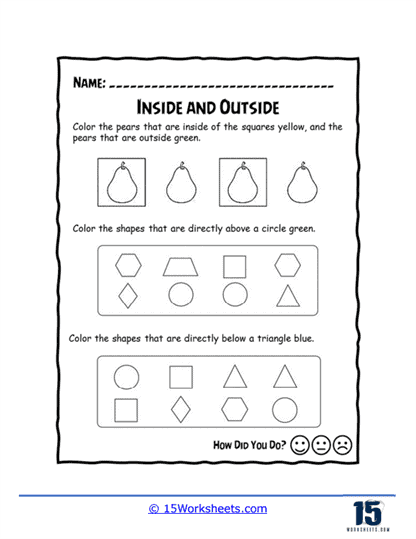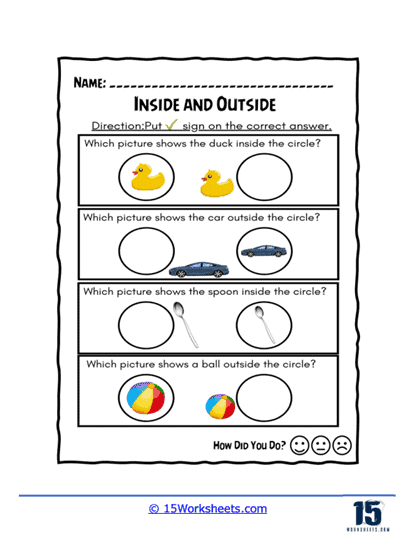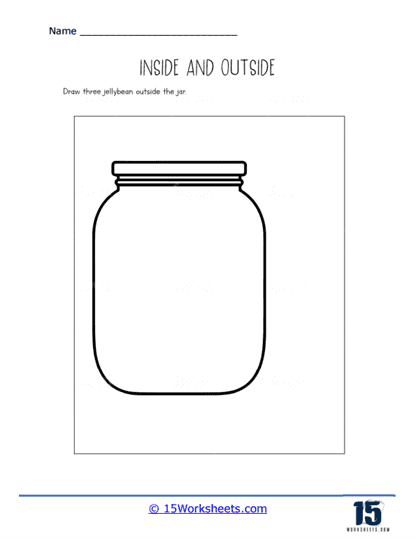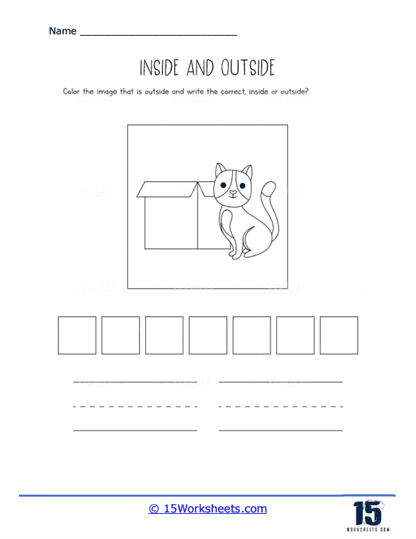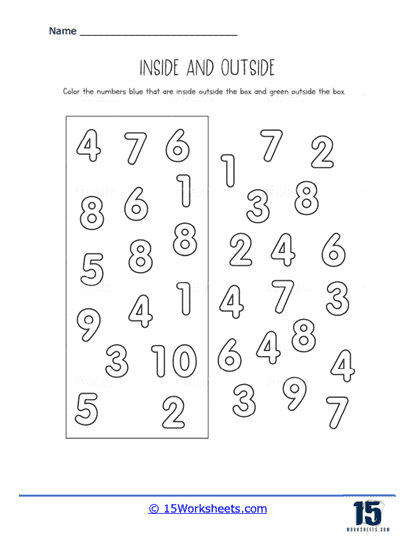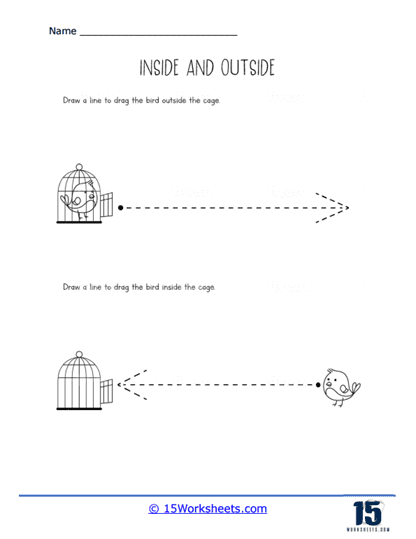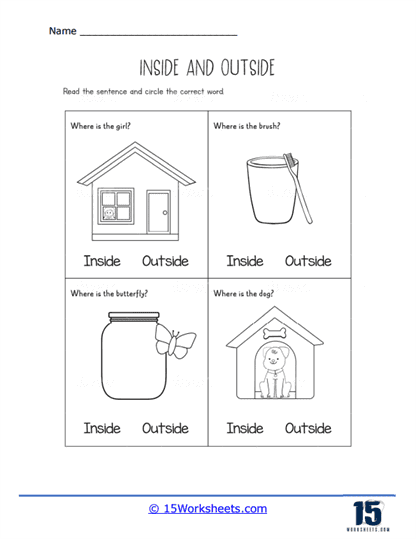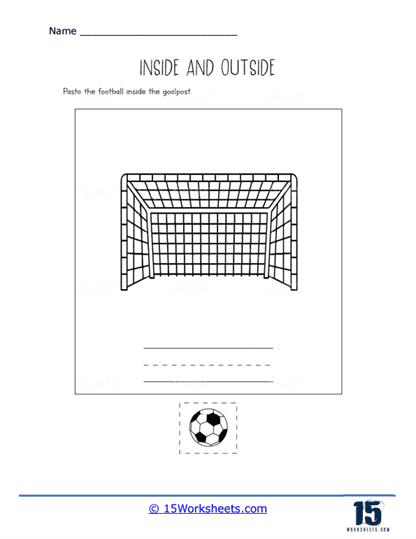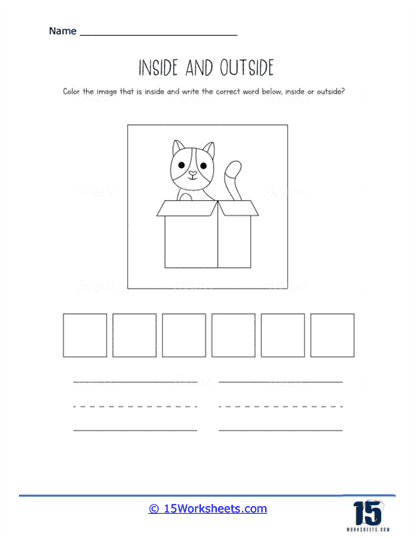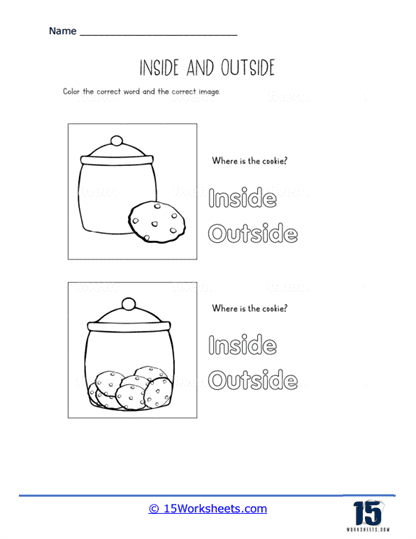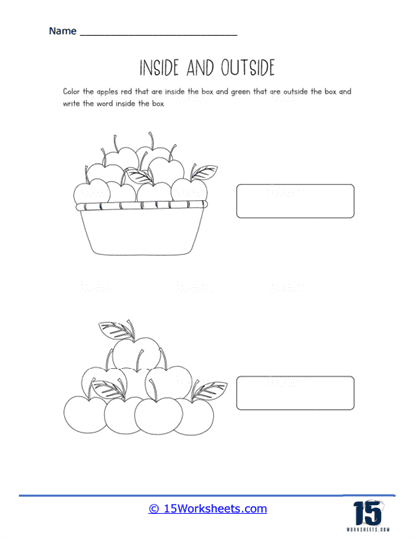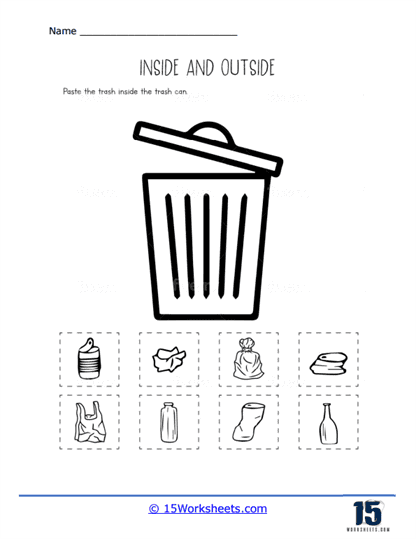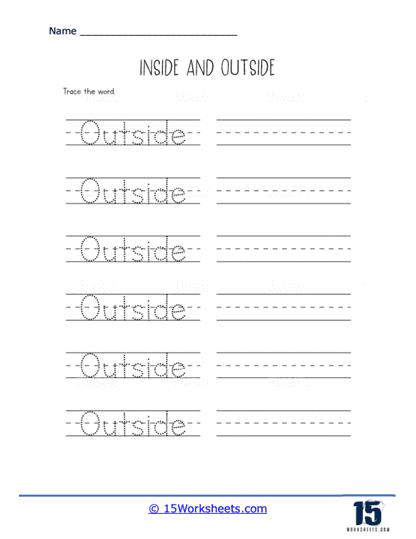Inside or Out Worksheets
About These 15 Worksheets
These worksheets will help students better understand spatial relationships. These terms are prepositions, words that describe where an object is in relation to another object. In this worksheet series, you will see pictures where certain objects or characters are inside something, like a house or a box, and other objects or characters are outside. The task would be to identify and label or circle the objects based on whether they’re inside or outside.
For example, a worksheet might have a picture of a cat inside a box and a dog outside the box. The instructions might ask the child to circle the animal that’s inside or color the animal that’s outside.
These worksheets help children develop an understanding of these positional words, and it’s a key part of their language and comprehension development. As a 13-year-old, these concepts are probably second nature to you now, but when you were younger, you also learned these foundational concepts. They’re a bit like the building blocks of understanding the world around us.
How To Teach This Concept
Teaching the concepts of “inside” and “outside” to children is an essential part of their spatial and cognitive development. These fundamental concepts help children understand their surroundings better, comprehend language, and express themselves more clearly. Here’s a detailed guide on how to effectively teach these concepts.
1) Demonstration – One of the best ways to begin teaching the concepts of “inside” and “outside” is through demonstrations. Use tangible objects around you to illustrate these prepositions. For example, you could place a toy inside a box and then take it outside. While you do this, articulate what you’re doing to the child – “See, the toy is now inside the box,” or “Look, the toy is outside the box now.” Consistent demonstration helps children to visually connect the words with their meanings.
2) Interactive Play – Encourage interactive play activities that involve the usage of “inside” and “outside”. For instance, you could build a small fort or use a playhouse and let the children play in and around it. When they are inside the fort, you can tell them, “You’re inside the fort”. When they come out, use the term “outside” – “You’re now outside the fort.” This helps children associate these terms with actual physical experiences.
3) Storytelling – Incorporate “inside” and “outside” in storytelling sessions. Use picture books that vividly depict these concepts. For example, a story about animals where some are inside a house while others are outside can be very effective. As you go through the story, emphasize the words “inside” and “outside”.
4) Use Arts and Crafts – Engage children in simple arts and crafts activities. Ask them to draw pictures of them playing inside their house and outside in the park. Use this as an opportunity to reiterate the concepts of “inside” and “outside”. Children can understand concepts better when they are involved in the creative process.
5) Real-life Activities – Include the terms “inside” and “outside” in regular conversation and daily activities. If you’re at home, point out when they’re inside, and when you leave, point out that they’re now outside. Use various settings to provide as much exposure to these terms as possible.
6) Worksheets – Use our worksheets, found above. They require children to identify and label objects based on whether they’re inside or outside. This could be coloring the objects inside a shape or circling the objects outside. These worksheets are excellent for reinforcing the concepts in a structured manner and also help to develop fine motor skills.
7) Games – Games are a great way to make learning enjoyable. Simple games like “Hide and Seek” can be useful, where you can say “Hide inside the house” or “You can’t go outside the garden”. Games not only reinforce the concepts but also help to check the child’s understanding in a fun and relaxed environment.
8) Songs and Rhymes – Using songs and nursery rhymes that incorporate the terms “inside” and “outside” can also be beneficial. Songs and rhymes are catchy and make it easier for children to remember the concepts.
In conclusion, teaching the concepts of “inside” and “outside” to children is a gradual process that involves repeated exposure and varied experiences. Different children may grasp these concepts at different paces, and that’s perfectly okay. The goal is to make the learning process enjoyable and meaningful. It’s important to show patience, provide positive reinforcement, and consistently incorporate these concepts into their everyday experiences. Over time, these foundational skills will become second nature to them.






